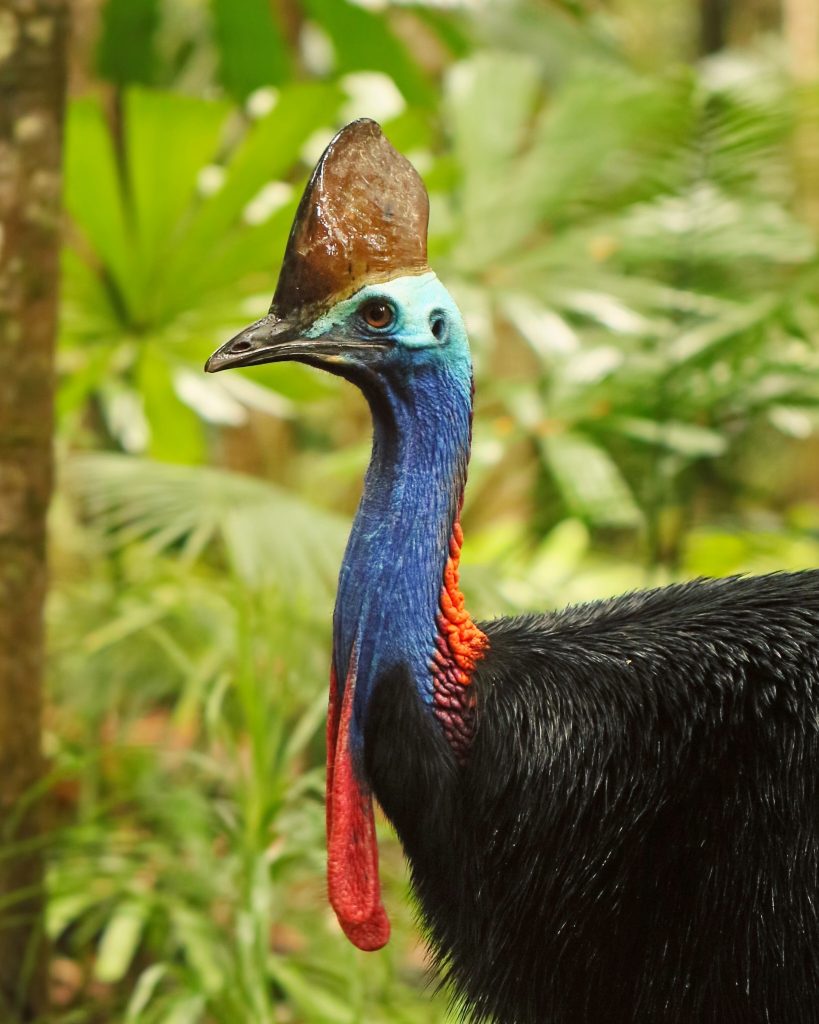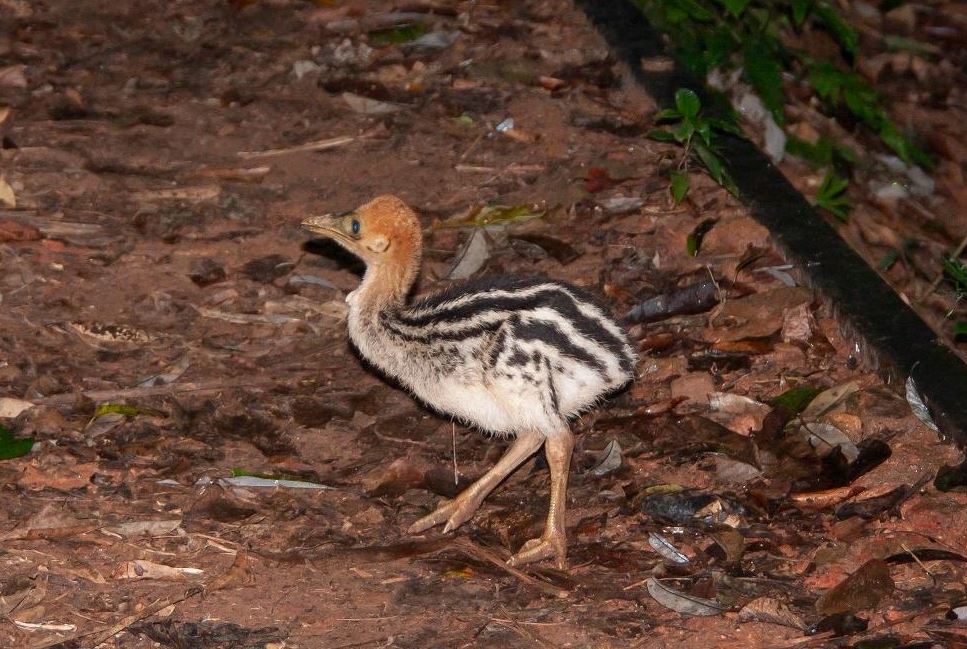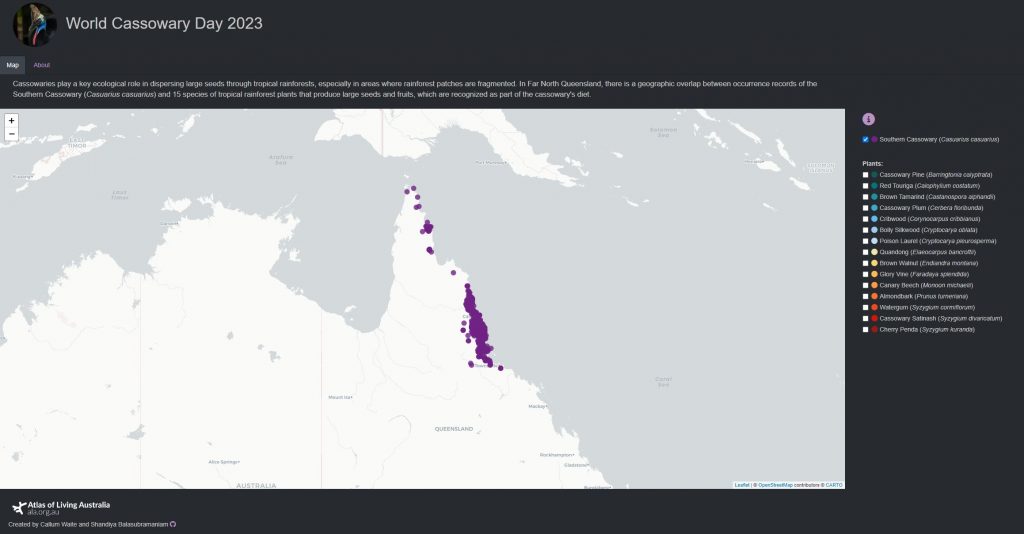Err… is that a bird or a dinosaur?
Well, both (kind of)! We’re talking about the Southern Cassowary (Casuarius casuarius), often described as one of the closest living relatives of dinosaurs.

These gigantic flightless birds (‘ratites’) occupy tropical areas of northern Australia and Papua New Guinea. Cassowaries are the second heaviest birds in the world (after ostriches), with females reaching a maximum weight of 55kgs and males up to 76kgs! They lay bright green eggs, with dads stepping up to be in charge of incubation and chick rearing. Once the eggs hatch, baby cassowaries can walk almost immediately with their strong back legs. Babies are not born with their signature black plumage, instead have banded yellow and brown striped patterning as chicks.

Keep your distance
You’ll often hear these big birds before you see them! Cassowaries are notorious for communicating through deep rumbles, hisses and grunting sounds. Cassowaries use various vocalisations to communicate through their dense rainforest habitats. If you hear a cassowary calling, make sure you keep your distance. Equipped with a razor-sharp beak, talons and a particularly territorial nature, cassowaries are more than capable of tearing through flesh if they feel threatened.
Keystone species
Cassowaries are ‘keystone species’ – species which has a disproportionately important role in their natural ecosystems. In rainforest habitats across northern QLD, cassowaries play a critical role in dispersing many native seeds through fragmented rainforest landscapes. Due to their large size, cassowaries can swallow fruits and other plants whole, digest the pulp and excrete seeds intact in dung piles (aka natural fertilisers). This ability to disperse large seeds helps to maintain healthy ecosystems by promoting vegetation regeneration.
To better illustrate how cassowaries support native plant dispersal across rainforest ecosystems, Callum and Shandiya from the ALA Science and Decision Support team have created an interactive map. The map shows 15 native plant species across the QLD wet tropics against cassowary records in the ALA!
Check out the interactive map!

To learn more about native seeds in tropical areas, check out the Australian Topical Herbarium.
#WorldCassowaryDay